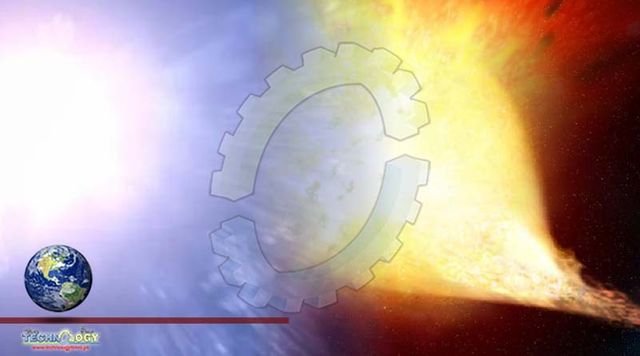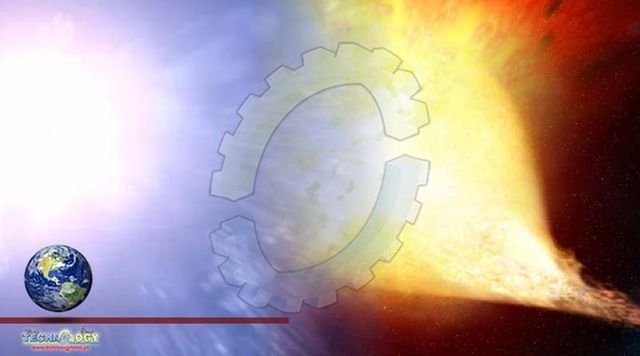It’s not unheard of to find a surviving star at the scene of a massive supernova explosion, which would be expected to obliterate everything around it, but the latest research from the Hubble Space Telescope has provided a long-awaited clue to a specific type of stellar death. In some supernova cases, astronomers find no trace of the former star’s outermost layer of hydrogen.

Suspicions that companion stars are to blame—siphoning away their partners’ outer shells before their death—are supported by Hubble’s identification of a surviving companion star on the scene of supernova 2013ge. The discovery also lends credence to the theory that most massive stars form and evolve as binary systems. It could also be the prequel to another cosmic drama: In time, the surviving, massive companion star will also undergo a supernova, and if both the stars’ remnant cores are not flung from the system, they will eventually merge and produce gravitational waves, shaking the fabric of space itself.
NASA’s Hubble Space Telescope has uncovered a witness at the scene of a star’s explosive death: a companion star previously hidden in the glare of its partner’s supernova. The discovery is a first for a particular type of supernova—one in which the star was stripped of its entire outer gas envelope before exploding.
The finding provides crucial insight into the binary nature of massive stars, as well as the potential prequel to the ultimate merger of the companion stars that would rattle across the universe as gravitational waves, ripples in the fabric of spacetime itself.
Astronomers detect the signature of various elements in supernova explosions. These elements are layered like an onion pre-supernova. Hydrogen is found in the outermost layer of a star, and if no hydrogen is detected in the aftermath of the supernova, that means it was stripped away before the explosion occurred.
The cause of the hydrogen loss had been a mystery, and astronomers have been using Hubble to search for clues and test theories to explain these stripped supernovae. The new Hubble observations provide the best evidence yet to support the theory that an unseen companion star siphons off the gas envelope from its partner star before it explodes
his was the moment we had been waiting for, finally seeing the evidence for a binary system progenitor of a fully stripped supernova,” said astronomer Ori Fox of the Space Telescope Science Institute in Baltimore, Maryland, lead investigator on the Hubble research program. “The goal is to move this area of study from theory to working with data and seeing what these systems really look like.”
Fox’s team used Hubble’s Wide Field Camera 3 to study the region of supernova (SN) 2013ge in ultraviolet light, as well as previous Hubble observations in the Barbara A. Mikulski Archive for Space Telescopes (MAST). Astronomers saw the light of the supernova fading over time from 2016 to 2020—but another nearby source of ultraviolet light at the same position maintained its brightness. This underlying source of ultraviolet emission is what the team proposes is the surviving binary companion to SN 2013ge.
Fox and his collaborators will be working with Hubble to build up a larger sample of surviving companion stars to other supernovae, in effect giving SN 2013ge some company again. “There is great potential beyond just understanding the supernova itself. Since we now know most massive stars in the universe form in binary pairs, observations of surviving companion stars are necessary to help understand the details behind binary formation, material-swapping, and co-evolutionary development. It’s an exciting time to be studying the stars,”
Source: This news is originally published by scitechdaily
